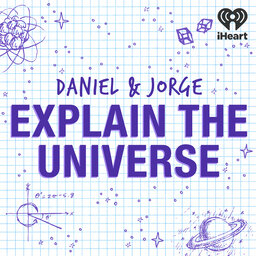Why does measuring a quantum object change it?
Daniel chats with Adam Becker about the "measurement problem" in quantum mechanics: does the wavefunction collapse, and what causes it?
Learn more about your ad-choices at https://www.iheartpodcastnetwork.com
See omnystudio.com/listener for privacy information.
 Daniel and Jorge Explain the Universe
Daniel and Jorge Explain the Universe


